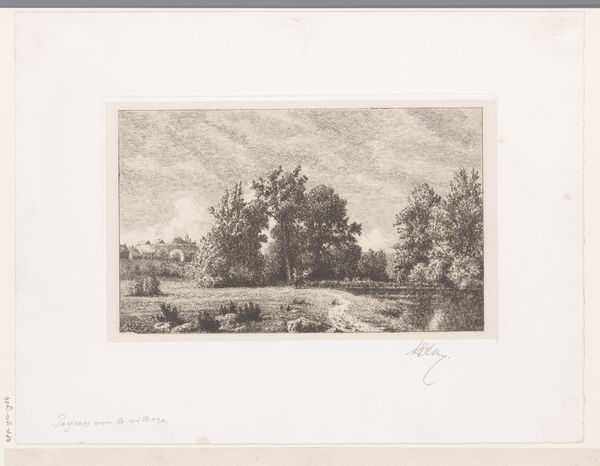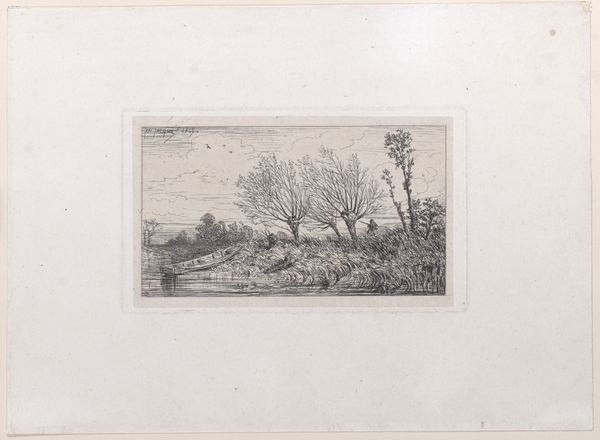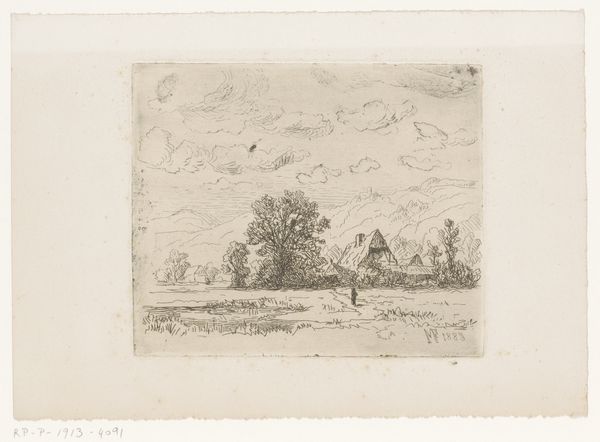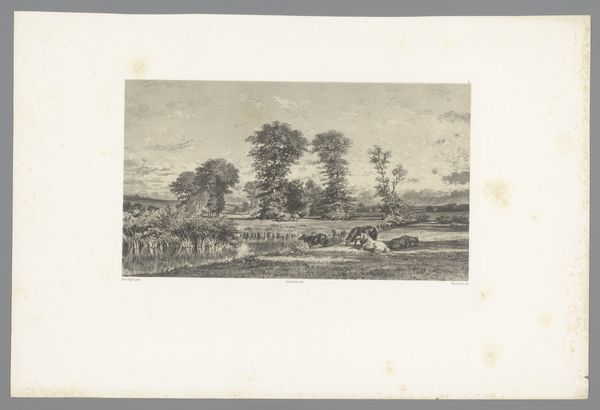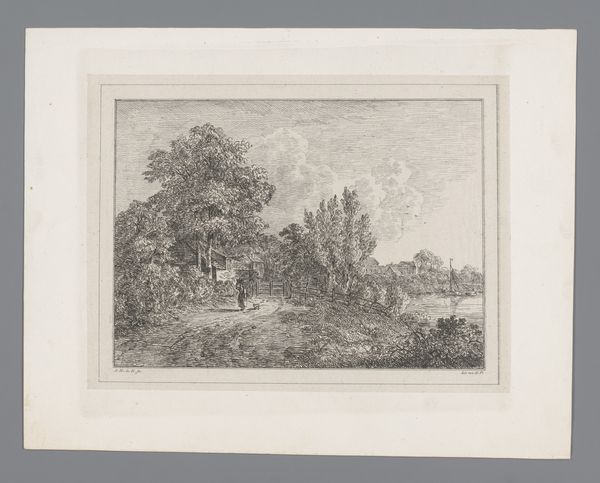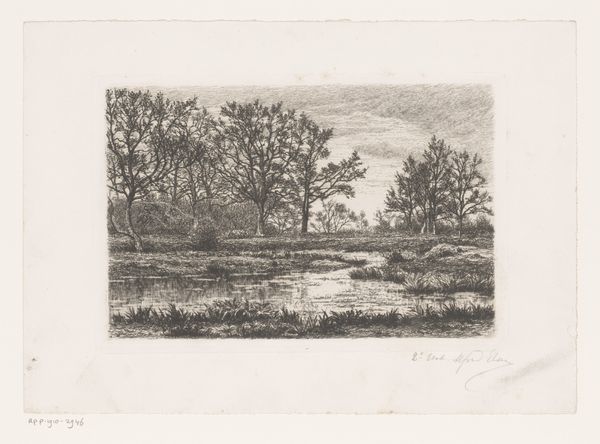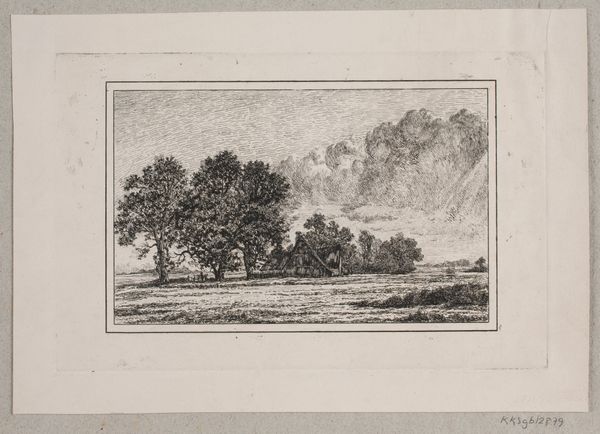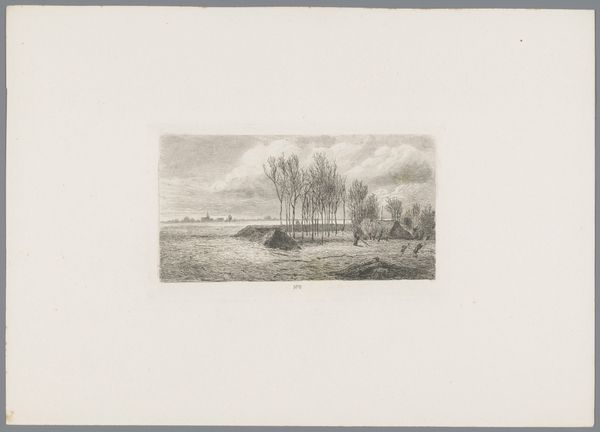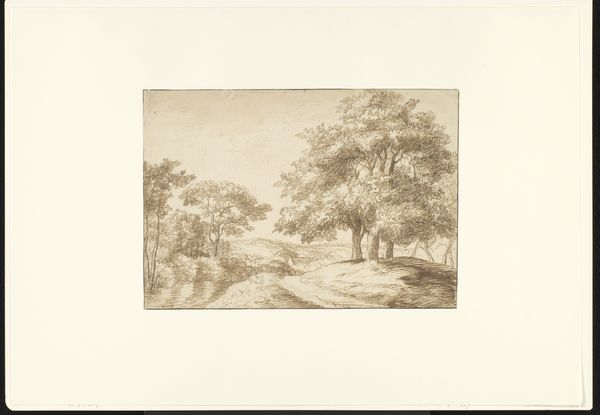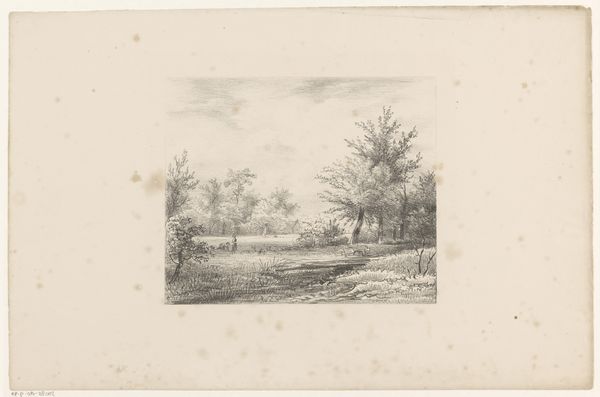
drawing, print, etching
#
drawing
# print
#
etching
#
landscape
#
realism
Dimensions: height 157 mm, width 250 mm
Copyright: Rijks Museum: Open Domain
Curator: What strikes me most about this etching is its tranquil mood, despite the incredible detail embedded within the relatively small scale. Editor: Indeed. This is "Landschap met waterplas en een dorp op de achtergrond," a landscape with a pool of water and a village in the background, created sometime between 1860 and 1910. It is currently held in the Rijksmuseum. As an etching, we're dealing directly with the artist's process here—the labor of incising the plate, the controlled application of acid, the pressures and possibilities of the printing press. Curator: And the formal arrangement is noteworthy. The artist has established a tripartite structure—earth, water, and sky. Each component contributes to an overall sense of balance, though there is perhaps an overabundance of detail in the foliage that suggests nature’s boundless variety. Note how the use of hatching and cross-hatching is denser near the trees, gradually lessening towards the skyline to convey distance. Editor: Absolutely. But I’m also drawn to how accessible etching as a medium made image dissemination more democratic during that period. This piece captures a moment of rural life, a connection to the land that the urbanizing population of the era was rapidly losing. What was it like for them to access these scenes mediated through print? Curator: An interesting perspective. From a purely visual standpoint, consider how the mirroring of the clouds in the water's surface introduces a subtle complexity, disrupting what might otherwise be a too-perfect symmetry. This duality, the mirroring, enhances the artwork’s reflective and contemplative qualities. Editor: The repetitive action of etching, that intense physical engagement, also has something of a meditative quality itself, doesn't it? Producing work that allowed it to be circulated widely—perhaps to a market of burgeoning urban middle classes eager to retain some romantic connection with the soil. Curator: It invites a sense of intimate observation. The close proximity one has to achieve during the etching process translates to the sense of closeness the artwork establishes with its viewer, and draws us in. Editor: To return to process is essential. Consider the cultural forces that might have determined the popularity of the scene, of the production and value of images for the developing modern subject. The way these prints circulated in the market and within the world more broadly would significantly determine the ways the cultural landscapes shifted in that period. Curator: Very well, then. Considering both the artistry and context of the work seems essential. Editor: Indeed. To account for production of and the social meanings generated and assigned to the work.
Comments
No comments
Be the first to comment and join the conversation on the ultimate creative platform.
